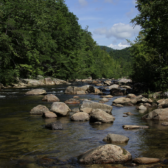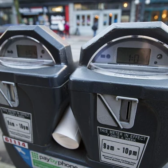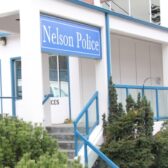CPR station reconstruction uses ancient and modern technology for energy efficiency
A local contractor is bringing an innovative edge to the revitalization of the CPR station at the foot of Baker Street by using local, recycled materials and a simple, age-old technology to increase energy efficiency.
Joern Wingender has just manufactured 8500 bricks made of wood waste and clay. The wood shavings, chips, and sawdust are from the mill at Harrop-Procter Forest Products, and the clay comes from the Castlegar area. The three-minute video above shows the process.
Wingender’s company, Traditional Timber Framing, is the consultant and general contractor for the restoration project. The Nelson and District Chamber of Commerce owns the building.
Ancient technology, 21st century energy efficiency
The bricks will form an interior wall inside a layer of cellulose insulation and will increase the insulation value significantly and create what Wingender calls “mass-enhanced R-value.”
“These bricks will actually be a heat sink, able to store heat and then radiate it back,” he told The Nelson Daily. “This is ancient technology. The clay is the universal part. People all over the world have used clay and then added whatever other material was available.”
He adds that the bricks can be recycled if necessary in the future, and that they can easily be used as a base for plaster, which would be more in keeping with the original character of the building than would drywall.
Local materials, technology from India
Even though the materials are local, Wingender had to import a manual press from India to make the bricks.
A job creation project sponsored by the B.C. Ministry of Social Development has supplied much of the labour.
Since 2010, the building has been re-roofed and the interior gutted with the removal of potentially hazardous materials. The outside of the building has been scraped ready for painting. Wingender and his crew are now busy making structural improvements, in preparation for more detailed renovations inside and out.
The goal: a hub for visitors and local economic development
The building will eventually become the Regional Visitor Gateway, which will include the tourism visitor centre. The Chamber of Commerce, the Nelson Economic Development Partnership, Invest Kootenay and the Nelson Kootenay Lake Tourism Association Regional Destination Marketing Organization will all be housed there, as well as other retail and public sector offices and services.

























